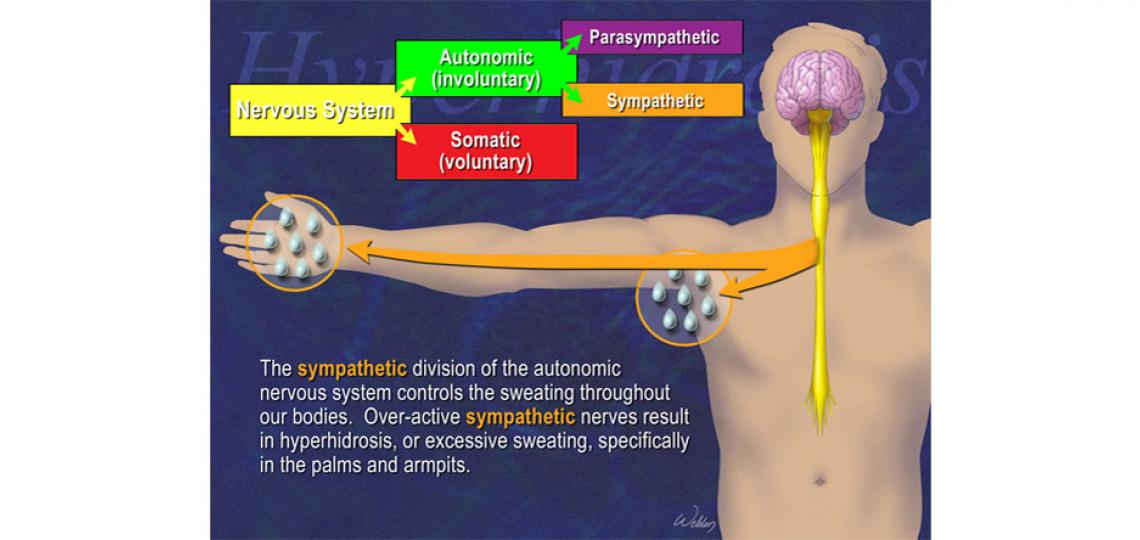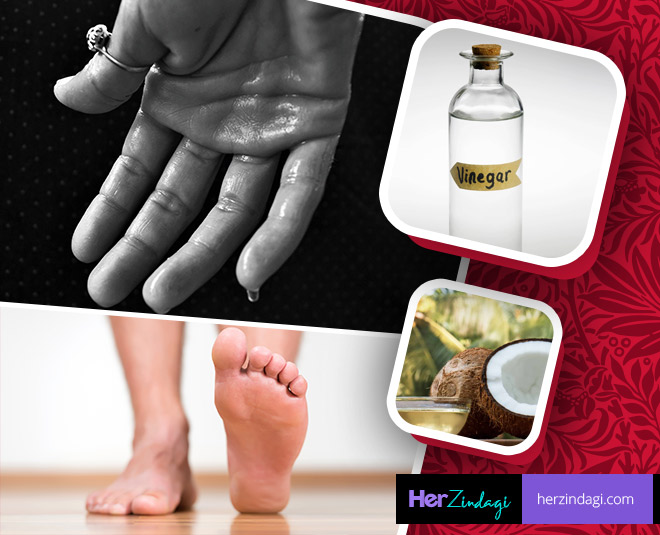Best Dermatology Approaches for Sweaty Hands Treatment: Tips and Techniques
Best Dermatology Approaches for Sweaty Hands Treatment: Tips and Techniques
Blog Article
Revealing the Intricacies of Excessive Sweating: A Comprehensive Overview to Diagnosis and Monitoring
Too much sweating, medically referred to as hyperhidrosis, is a problem that impacts a significant number of individuals and can have a profound effect on their top quality of life. While sweating is a natural physical feature, its overactivity in hyperhidrosis provides an one-of-a-kind collection of challenges that usually surpass simple discomfort. Comprehending the underlying causes, recognizing the signs, and navigating the diagnostic process for hyperhidrosis can be elaborate tasks. In this detailed overview, we will explore the complexities of hyperhidrosis, from its medical diagnosis to the variety of therapy alternatives readily available, clarifying efficient monitoring approaches for those facing this problem.

Recognizing Hyperhidrosis Causes
Hyperhidrosis triggers can be attributed to different variables such as genes, hormonal discrepancies, and particular clinical conditions. Genetics play a significant role in key focal hyperhidrosis, where people acquire the condition from their family members. By determining the certain factors adding to extreme sweating, healthcare providers can tailor treatment strategies to deal with the underlying reason, supplying relief and enhancing the top quality of life for people affected by hyperhidrosis.
Identifying Hyperhidrosis Manifestations

Additionally, hyperhidrosis symptoms might materialize in emotional and social distress, as people may really feel embarrassed or anxious about their sweating, leading to evasion of social scenarios (How to stop sweaty hands). Additionally, repeated episodes of extreme sweating can cause skin maceration, fungal infections, and a total decline in self-worth
Diagnostic Process for Hyperhidrosis
Launching the analysis process for extreme sweating involves thorough analysis of the person's medical background and checkup. Asking about the onset, duration, and activates of sweating episodes is critical to differentiate in between key focal hyperhidrosis and additional generalized hyperhidrosis. Case history must also consist of questions concerning drugs, medical problems, and household history of hyperhidrosis.
During the physical exam, specific interest is paid to the locations affected by sweating. The doctor may assess the level of sweating, look for indications of underlying problems, and review the impact of sweating on the person's lifestyle. In addition, certain examinations like the gravimetric examination, starch-iodine examination, or skin conductance measurements may be performed to measure the amount of sweat generated.
Furthermore, in instances where second hyperhidrosis is presumed, added examinations such as blood tests, urine examinations, and imaging research studies might be recommended to identify the underlying reason for excessive sweating. The diagnostic process intends to accurately establish the kind and cause of hyperhidrosis to assist proper monitoring techniques.
Treatment Alternatives for Hyperhidrosis
When attending to extreme sweating, different treatment options are available to ease symptoms and boost the individual's quality of life. The treatment strategy for hyperhidrosis depends on the extent of symptoms and the person's action to initial treatments.
Topical therapies, such as aluminum-based antiperspirants, are typically suggested as the initial line of protection for handling light cases of hyperhidrosis. These products work by connecting the sweat air ducts, thus reducing the quantity of sweat that gets to the skin's surface area. For individuals with extra serious signs and symptoms, oral medications like anticholinergics may be recommended to aid lower sweating. These medicines can have side results and are not ideal for everyone.

Effective Monitoring Techniques
To effectively take care of hyperhidrosis, a detailed and customized therapy plan tailored to the individual's particular demands and reaction to previous treatments is essential. This plan may include a combination of restorative methods, consisting of way of living adjustments, topical therapies, oral drugs, botulinum toxin injections, iontophoresis, and in severe situations, medical treatments like gland elimination or sympathectomy. Way of life adjustments such as putting on moisture-wicking apparel, using antiperspirants, and practicing stress-reducing strategies can match clinical treatments. Topical antiperspirants including aluminum chloride are usually the first-line treatment, with more powerful formulations available for resistant cases. Oral medicines like anticholinergics may be recommended for generalised hyperhidrosis. Botulinum toxic substance injections are efficient for focal hyperhidrosis, supplying momentary relief Sweaty hands treatment by obstructing the release of acetylcholine. Iontophoresis, entailing making use of a low electric existing to minimize sweat gland activity, can be advantageous for both palmoplantar and axillary hyperhidrosis. Surgical alternatives are typically reserved for serious, refractory cases and call for mindful consideration of advantages and dangers. A multidisciplinary technique entailing dermatologists, medical care doctors, and, if needed, specialists, can maximize the monitoring of hyperhidrosis.
Conclusion
Finally, hyperhidrosis is a condition defined by too much sweating, which can substantially influence an individual's top quality of life. By comprehending the reasons, recognizing the symptoms, and undertaking the analysis process, doctor can successfully handle this condition. Therapy alternatives consist of topical medicines, dental medicines, shots, and even operations in extreme instances. With appropriate diagnosis and management methods, individuals dealing with hyperhidrosis can find alleviation and improve their total health.
Too much sweating, clinically recognized as hyperhidrosis, is a condition that affects a considerable number of people and can have a profound influence on their top quality of life. By recognizing the specific factors contributing to excessive sweating, medical care service providers can customize therapy strategies to address the underlying cause, providing relief and boosting the high quality of life for individuals affected by hyperhidrosis.
Hyperhidrosis, characterized by extreme sweating beyond what is needed for managing body temperature, can considerably affect a person's quality of life. Asking about the start, duration, and triggers of sweating episodes is essential to set apart in between main focal hyperhidrosis and second generalized hyperhidrosis. Treatment for hyperhydrosis of hands.In final thought, hyperhidrosis is a problem characterized by extreme sweating, which can significantly impact an individual's top quality of life
Report this page